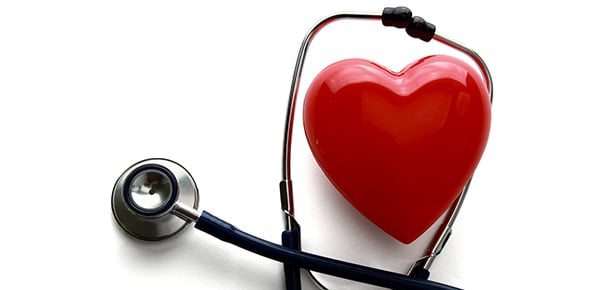Cardiac Arrhythmias

- 1.
What are the two causes of arrhythmia?
- A.
Alterations in impulse generation; abnormality in impulse conduction
- B.
Alterations in impulse generation; alterations in SAN frequency
- C.
Abnormality in impulse generation; alterations in AVN frequency
Correct Answer
A. Alterations in impulse generation; abnormality in impulse conduction -
- 2.
What are the two types of alterations in impulse generation?
- A.
Decreased normal automaticity; abnormal automaticity (damaged myocardial cell remains partially depolarised)
- B.
Enhanced normal automaticity (competing stimuli); myocardium repolarises too early
- C.
Enhanced normal automaticity (competing stimuli); abnormal automaticity (damaged myocardial cell remains partially depolarised)
Correct Answer
C. Enhanced normal automaticity (competing stimuli); abnormal automaticity (damaged myocardial cell remains partially depolarised) -
- 3.
What goes wrong in abnormal impulse condction?
- A.
Unidirectional block leading to re-entry phenomenon
- B.
Bidirectional block leading to re-entry phenomenon
- C.
Unidirectional block leading to escape phenomenon
Correct Answer
A. Unidirectional block leading to re-entry phenomenon -
- 4.
In order, what are the classes of drugs?
- A.
1 - Na blockers; 2 - B blockers; 3 - K blockers; 4 - Ca blockers; 5 - other
- B.
1 - K blockers; 2 - Ca blockers; 3 - other; 4 - Na blockers; 5 - B blockers
- C.
1 - Ca blockers; 2 - B blockers; 3 - Na blockers; 4 - K blockers; 5 - other
Correct Answer
A. 1 - Na blockers; 2 - B blockers; 3 - K blockers; 4 - Ca blockers; 5 - other -
- 5.
What is meant when Sodium channel blockers are described as being "use-dependent"?
- A.
Bind most rapidly to open channels - greater degree of blockade when channels are opened frequently
- B.
Bind most rapidly to closed channels - greater degree of blockade when channels are closed frequently
- C.
Bind most rapidly to lesser-used channels - greater degree of blockade when channels are used less frequently
Correct Answer
A. Bind most rapidly to open channels - greater degree of blockade when channels are opened frequently -
- 6.
Match the sub-classes of Sodium channel blockers with their description.
- A.
1a - moderate blockers, increase action potential duration and resting potential, e.g. procainamide; 1b - weak blockers , decrease action potential duration and resting potential, e.g. lidocaine, 1c - strong blockers, no change in action potential or resting potential duration, slows conductivity, e.g. flecainide
- B.
1a - moderate blockers, increase action potential duration and resting potential, e.g. procainamide; 1b - weak blockers , decrease action potential duration and resting potential, e.g. lidocaine, 1c - strong blockers, no change in action potential or resting potential duration, slows conductivity, e.g. flecainide
- C.
1a - weak blockers, decrease action potential duration and resting potential, e.g. procainamide; 1b - strong blockers , increase action potential duration and resting potential, e.g. lidocaine, 1c - moderate blockers, no change in action potential or resting potential duration, slows conductivity, e.g. flecainide
Correct Answer
B. 1a - moderate blockers, increase action potential duration and resting potential, e.g. procainamide; 1b - weak blockers , decrease action potential duration and resting potential, e.g. lidocaine, 1c - strong blockers, no change in action potential or resting potential duration, slows conductivity, e.g. flecainide -
- 7.
What are the effects of B-blockers?
- A.
Increase automaticity and conduction velocity, increase refractory period
- B.
Increase automaticity and conduction velocity, decrease refractory period
- C.
Decrease automaticity and conduction velocity, increase refractory period
Correct Answer
C. Decrease automaticity and conduction velocity, increase refractory period -
- 8.
What is the mechanism of action of K channel blockers?
- A.
Prolong cardiac action potential and refractory period of cardiac muscle
- B.
Shorten cardiac action potential and refractory period of cardiac muscle
- C.
No effect on cardiac action potential but decrease refractory period of cardiac muscle
Correct Answer
A. Prolong cardiac action potential and refractory period of cardiac muscle -
- 9.
What is the mechanism of action of Ca channel blockers?
- A.
Prolong plateau phase of action potential and decrease force of contraction
- B.
Shorten plateau phase of action potential and decrease force of contraction
- C.
Shorten plateau phase of action potential and increase force of contraction
Correct Answer
B. Shorten plateau phase of action potential and decrease force of contraction -
- 10.
What is verapamil used for?
- A.
Supraventricular tachycardia
- B.
Atrial fibrillation
- C.
Life-threatening tachycardia
Correct Answer
A. Supraventricular tachycardia -
Quiz Review Timeline +
Our quizzes are rigorously reviewed, monitored and continuously updated by our expert board to maintain accuracy, relevance, and timeliness.
-
Current Version
-
Jan 25, 2013Quiz Edited by
ProProfs Editorial Team -
May 19, 2011Quiz Created by
Clatkinson1
 Back to top
Back to top


